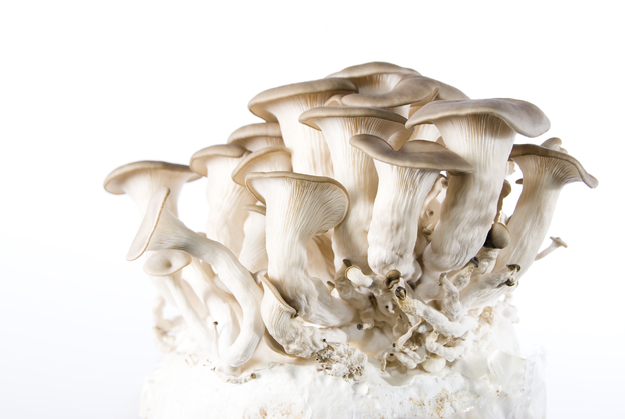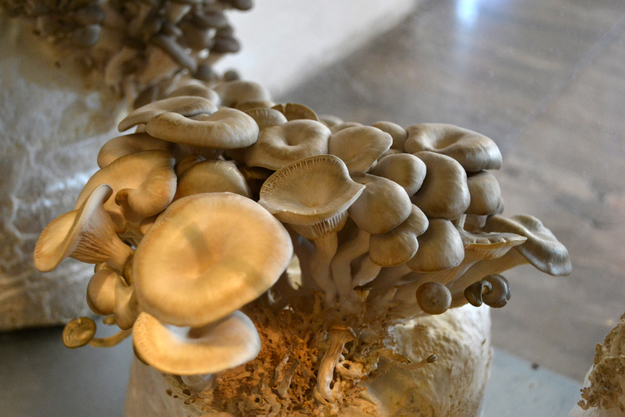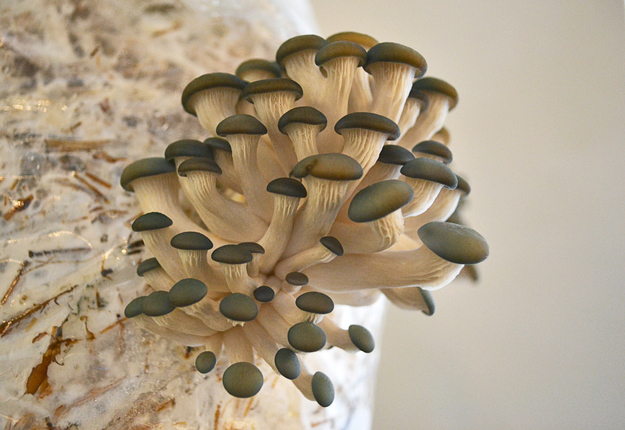About
A favourite of mushroom growers for a long time, this mushroom grows wild on trees such as the oak, alber, beech, birch, willow, and poplar, in the spring and autumn and is quite easy to cultivate. One of the more colourful edible mushrooms, it comes in grey, brown, yellow, and pink. This sweet tasting mushroom is also rich in protein, contains 30-144 mgs of vitamin C, and is rich in potassium. It is often considered a medicinal mushroom since it produces compounds such as "Lovastatin" which is said to reduce cholesterol.
The oyster mushroom is one of the few known carnivorous mushrooms. Its mycelia can kill and digest nematodes, which is believed to be a way in which the mushroom obtains nitrogen.
Ecovactive Design, has proposed using the mycelium along with the growing substrate as a substitute for petroleum derived packing material or as an insulating material.
Growing proccess
Stage 1
A substrate mixture of wood and nutrients has been inoculated with King Oyster mushroom spores. The spores multiply and spread through the substrate. This stage, called “spawn run”, lasts between 8-14 days.
Stage 2
At this stage, called “primordia formation”, the root structure of the mushrooms, the mycelium, has now spread throughout the substrate. The substrate block forms a white and slightly rubbery shell. This stage lasts between 3-5 days.
Stage 3
The final stage is ‘fruitbody development’. Once fruitbodies are seen, the plastic casing is taken off 3/4 of the substrate block in order to allow the mushrooms to grow. The mushrooms are now ready to be harvested. This stage lasts between 3-5 days.


